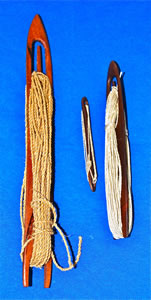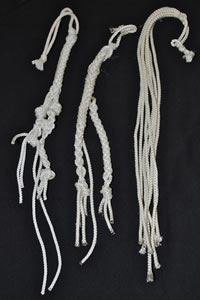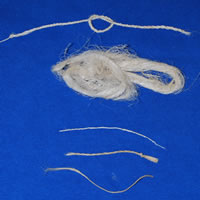Olona: Ties That Bind To Old Hawaii

Wednesday - July 13, 2011
| Share
 Del.icio.us
Del.icio.us
|
Keith Maile understands the importance of keeping close ties with old Hawaii. In his case, he literally ties the past with the present with one of the strongest natural fibers known to man: the olona plant.
“Olona was so important to ancient Hawaiians that they grew it in acreage lots,” says Maile. “It was their only nonfood crop. They lashed everything with the natural fiber from spears to utensils, even canoes. And sometimes it was life and death. Can you imagine if the lashing on your canoe came apart? You’d be in a lot of trouble.”
The fiber also was used to make bags, fishing lines and fishing nets. To prolong its life, it was treated with kukui oil. World sailors saw the importance of the white cordage for rigging. The olona was stronger than, and twice the diameter of, what was used for conventional rigging. And the plant did not kink or stretch, which made it even more valuable.
Hawaiians used the product as a bartering tool with world travelers. It was not uncommon for a Hawaiian net maker to receive dogs, fish and food in exchange for 4,000 strands of olona fiber. And because of its high value, taxes were often paid to ali’i with olona. The plant was used to make kahili, royal capes, cloaks and even helmets.

|
Maile is a noted Hawaiian cordage practitioner. He first learned about the lost art and its history six years ago.
“Actually it’s kind of funny. I thought cordage was all about braids and ponytails,” he says with a laugh. “But as I learned about lua (an ancient Hawaiian martial art of selfdefense) and the weapons we use, I learned olona and cordage were more about sharing our culture, showing things our kupuna did and making a big deal of what they did.”
Maile quickly “changed his attitude” and absorbed all he could about the valuable commodity. The Kailua High School graduate now follows the same traditions of using his hands to create cordage for practical and ritual purposes.
Braiding or twining olona by hand is a tedious process. One method used by Maile is called “hilo.” The technique involves taking the natural fibers and twisting them together along your thigh or foot, pinching one end to maintain tension and rolling the free hand so that the fibers spin.

|
“Can you imagine hundreds of continuous feet of fiber? It’s a lot of work and the process is not easy,” he says. “That’s probably another reason this type of cordage is not around today. “
Maile works closely with local farmers in Kaneohe who grow the rare plant, and even helps them with the harvest.
“Olona grows in deep river valleys where it’s cool and there is lots of water,” he says. “Besides Kaneohe, there are some plants on the Big Island and along Hana Highway on Maui. They usually grow 6 to 10 feet tall, like a tall shrub.”
He now shares his knowledge with those willing to learn. This Saturday, he’ll be one of several demonstrators who’ll share their craft at the 34th annual Prince Lot Hula Festival at Moanalua Gardens.

|
“I’ve always wanted to participate in the festival and this will be my first one,” he says with excitement. “I’m going to teach braiding from 8 a.m. until 3 p.m. and there will be a final exam! Olona is rare, but it’s making a comeback!”
The lost art is making a comeback thanks in large part to cultural practitioners such as Maile, who understand the importance of keeping ties with old Hawaii and making it relevant today.
For more information on the art of Hawaiian cordage, go to Keithmaile.com. For more information on the 34th Prince Lott Hula Festival, go to moanaluagardensfoundation.org.
E-mail this story | Print this page | Comments (0) | Archive | RSS Comments (0) |
Most Recent Comment(s):













